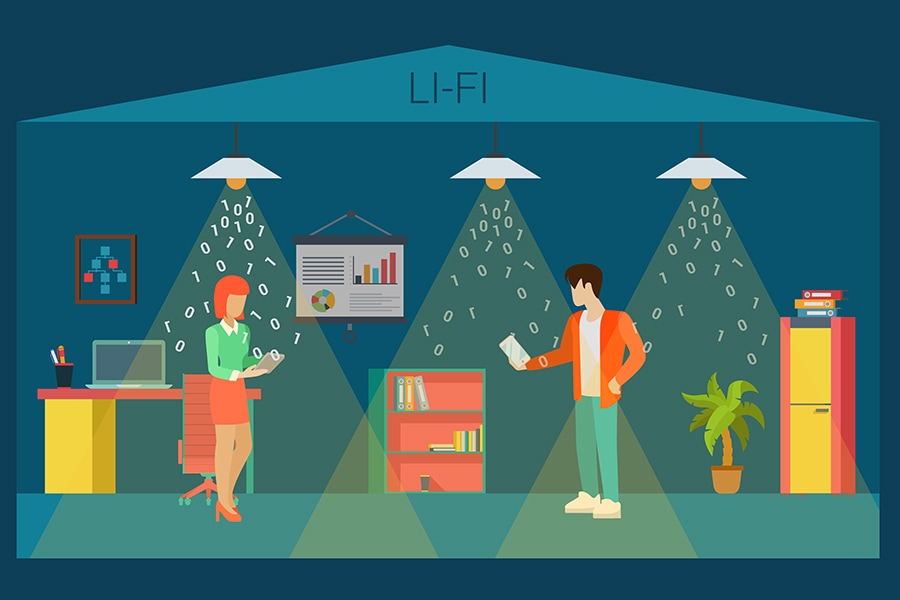
Bringing the internet to billions—the future of data transmission over the internet
Research shows that by using sophisticated and advanced LEDs, LiFi can transfer data at a speed of 100 gigabytes per second — almost ten times faster than the fastest WiFi
 Image: Shutterstock
Image: Shutterstock
We are currently living in a world that has more data than the human population. Massive amounts of data are transmitted over the internet every second. The emergence of Industry 4.0 technologies and associated applications have paved the way for about 4.6 billion internet users, 5 million years equivalent high-density video transmitted through mobile devices monthly, 80 billion internet of things (IoT) connected devices worldwide – around ten times the world population – exponentially growing data.
COVID-19, in particular, has made our world increasingly contactless, and the internet has become fundamental for the continuity of both business and life. Data transmission through a traditional medium has many limitations in terms of availability, access, efficiency, and security. Here, we discuss an alternate next-gen technology for internet access.
Today most data is communicated through ‘WiFi’ a family of wireless network protocols used to transmit data via electromagnetic signals. In the past several years, WiFi technology has been connecting personal computer desktops and laptops, smartphones and tablets, smart TVs, printers, smart speakers, cars, drones, etc., making the internet communications of big data possible. WiFi connectivity is based on radio waves, a special type of electromagnetic signal wave (with a longer wavelength and lower energy) designed to carry data through the air over relatively long distances. These signals oscillate at a very high frequency, which allows the waves to travel through the air, similar to waves on an ocean, thus enabling uninterrupted data transmission.
How much of the radio spectrum, a naturally available resource that WiFi technology is based upon, is still available to transmit exponentially increasing amounts of data over the internet? Imagine the world when the radio frequency spectrum is completely occupied with no room for internet transmissions through WiFi. This would be a critical challenge for organizations' survival in the post-COVID-19 era, as the internet becomes a digital transformation’s imperative. An overview of the radiofrequency map of developed countries shows that the radio spectrum is pretty full. Put differently, the important resource that has been helping WiFi transmit data over the internet for the past several years and keeping the IoT devices alive is much occupied.
One solution to the above-said problem is to explore the other parts of the electromagnetic spectrum in more detail. While high-energy waves that include gamma and x-rays cannot transmit data over long distances due to inherent shorter wavelengths, the other parts like the ultra-violet and infra-red rays are harmful. However, the healthy alternative that constitutes visible light is another natural resource to look at. While the visible light spectrum appears to be tiny on the electromagnetic spectrum map (in logarithmic scale), on a linear scale, the visible light spectrum is a thousand times larger than the radio spectrum.
[This article has been reproduced with permission from the Indian School of Business, India]







